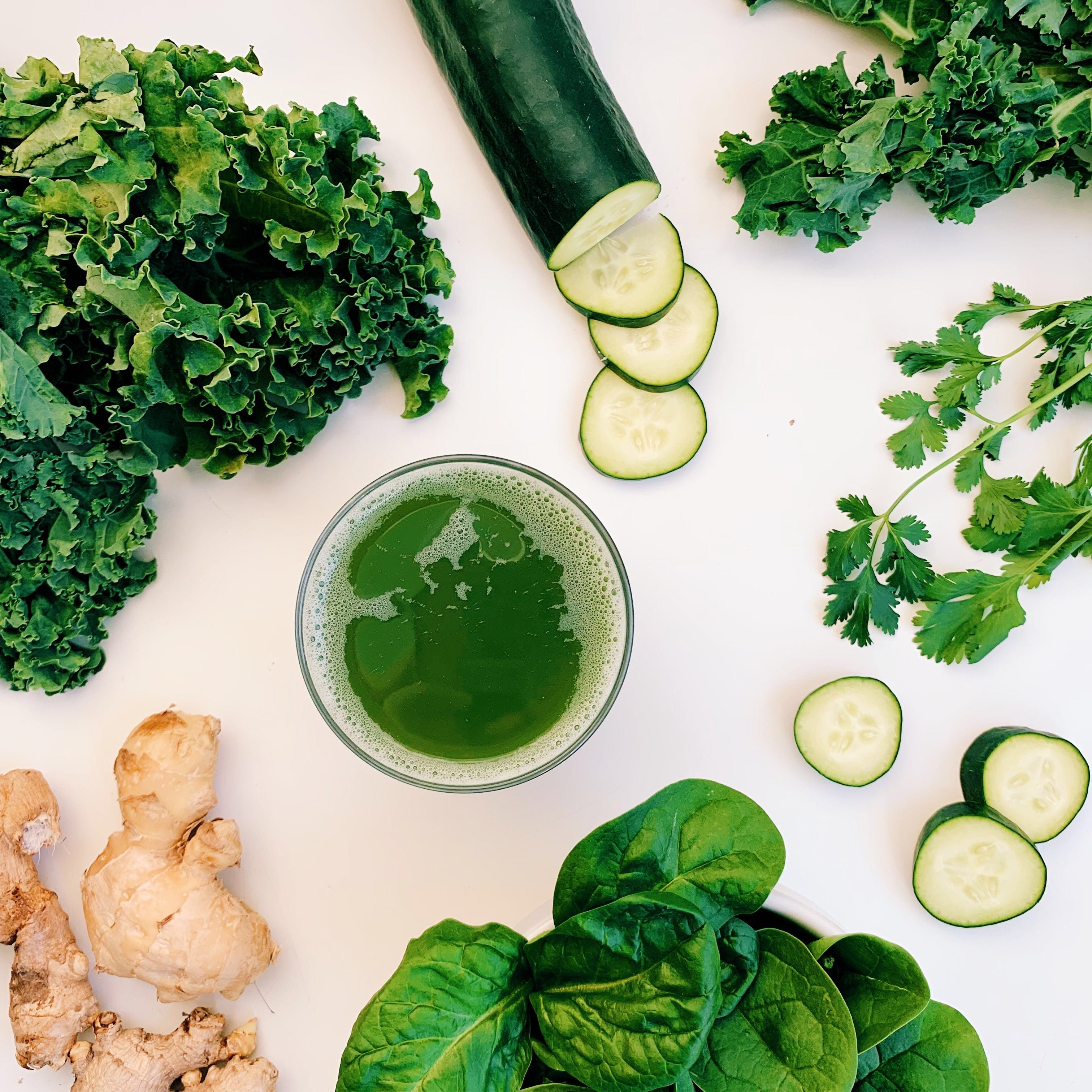
Green Juice is Good for You—If You Choose a Healthy Option
Green juice is the beloved wellness staple touted as the cure-all for everything. But, not all green juices are good for you. There are nutrient-rich, blood sugar balancing green juices—the type that boosts energy, makes our skin glow and help us channel our inner Gwyneth Paltrow. And then there are the sugar-packed, blood sugar spiking, nutrient-poor green juices that make up at least 99% of store-bought options.
How to Choose a Healthier Green Juice
Check the Juice’s Label to Make Sure It’s Packed with Veggies
My number one tip for when buying store-bought green juice? Check the ingredients label. Even in the fanciest of juice bars. By law, ingredients have to be listed from the highest amount to the lowest amount, and if you turn your bottle around and see apple, orange, pineapple, etc. listed as the first ingredient, then it’s a fruit juice, not a vegetable juice.
Avoid juices that are packed with fruits
Whilst fruit does contain fibre vitamins, minerals, antioxidants and phytonutrients, it also contains sugars that break down to glucose and fructose during digestion. The whole fruit will contain some fibre that slows down the blood sugar spike caused by the glucose, but your body will respond to the fruit juice as if it were liquid sugar, causing your blood sugar to rise rapidly. This will produce a rise in insulin which switches your body from fat-burning mode to fat storage mode.
And that’s just the glucose. Fructose (the simple sugar that fruit and fruit juice becomes in the body) is stored faster than any other carbohydrate. This means we don’t use it as fuel for our muscles. It simply gets stored as visceral fat around your organs, which can pose a huge health risk. Fructose is also metabolized in the liver, and high amounts (like those in fruit juices) causes high levels of free radicals, increasing inflammation in the body.
More tips for choosing a healthier green juice
- Always avoid juices that have fruit at the beginning of the ingredients list.
- If all of your options start the ingredient list with fruit, then find the least bad option. I often tell my clients to skip it altogether and drink water, but if you still want to have your juice, check out the carbohydrate content on the nutritional label. If it’s higher than 18g per serving, then it’s a no go. And always check out the serving size. Often one bottle of juice contains 2 servings, providing 40-50g of carbohydrates (read: sugar) in total!
- If possible, opt for a freshly made juice, and swap out the fruit for water-rich cucumber instead.
- Adding in lemon, ginger, parsley, etc. can help the juice be more palatable for those who are used to sweeter options, or if you really can’t bear it, ask for half the amount of fruit (i.e. half an apple).
Should you make green juice at home?
Making healthy green juice at home is a much healthier alternative to many store-bought juices, not to mention a lot more cost-effective! However, before I recommend juicing to my clients, I prefer them to make a vegetable smoothie instead. This is because smoothies retain all of the fibre that is super beneficial for gut health, detoxification, hunger hormone balance and weight loss. Simply blend your leafy greens with half a lemon (just peel it and then throw in), 1 cup water and add cucumber, celery, avocado, ginger, etc.
If you are eating your 7-9 servings of low carb veggies a day, then you can juice! I bought a juicer last year after months of research, and I now juice at least 2-3 times a week. Here’s my favourite fruit-free juice recipe that features fennel, one of the best vegetables for cleansing and detoxifying. Fennel also adds a touch of fructose-free sweetness for a tasty, satisfying and healthy green juice.
Fruit-Free Green Juice with Fennel ⠀
- 1/2 cucumber⠀
- 1/2 fennel
- 4 celery stalks⠀
- 1 cup spinach⠀
- 1/2 lemon⠀
- 2 inches ginger⠀
- 1/4 cup cilantro/parsley, or both
Looking for more help with eating healthy? My 8 Week Lean and Clean Program will help you balance your blood sugar, beat cravings and lose weight in a healthy, sustainable way. The program comes with over 100 personalized recipes, workouts, wellness strategies and more. Plus, you’ll get the guidance, support and accountability of a Holistic Nutritionist to guide you the whole time.
Helping
High-Achieving
Women Create
Optimum
Health
home
about
private coaching
The Metabolic Beauty Reset
corporate wellness
blog
privacy policy
terms & conditions
contact
© 2021 Jennifer Hanway, llc | All Rights Reserved | brand + website by high Moon studio
Programs